From Arizona Takeout to Italian Tables
After realizing my monthly DoorDash budget could fund an Italian adventure, I’ve traded delivery apps for authentic dining experiences across Italy. This page chronicles the restaurants, trattorias, osterias, and cafes that have become the highlights of my Italian journeys. These aren’t just meals—they’re memories that taste like the real Italy.
Understanding Italian Dining Establishments
Before diving into my recommendations, it helps to understand the different types of Italian eateries:
- Ristorante: More formal dining with full service
- Trattoria: Family-run, casual restaurants with regional specialties
- Osteria: Originally wine shops that served simple food, now similar to trattorias but often more wine-focused
- Enoteca: Wine bars that usually serve appetizers and small plates
- Bar/Caffè: For coffee, pastries, sandwiches, and aperitivo
- Pizzeria: Specializes in pizza, often with limited other options
- Gelateria: Ice cream shops (and yes, they deserve their own category!)
True Italian dining isn’t just about the food—it’s about pace, atmosphere, and tradition. Meals are meant to be lingered over, never rushed. Dinner rarely starts before 8pm, and expect to spend at least 2 hours enjoying multiple courses.
Essential Italian Dining Phrases
| English | Italian | Pronunciation |
| A table for two, please | Un tavolo per due, per favore | oon TAH-voh-loh per DOO-eh, per fah-VOR-eh |
| What do you recommend? | Cosa consiglia? | KO-sah kon-SEE-lyah |
| I’d like to order | Vorrei ordinare | vor-RAY or-dee-NAR-eh |
| May I have the check, please? | Il conto, per favore | eel KON-toh, per fah-VOR-eh |
| It was delicious | Era delizioso | EH-rah deh-lee-tzee-OH-so |
Rome Dining Highlights
Traditional Roman Cuisine
- Trattoria Da Enzo al 29 – Trastevere A tiny, always-packed trattoria serving the best cacio e pepe I’ve ever tasted. No reservations, so arrive early (7:30pm) or be prepared to wait.
- Armando al Pantheon – Near the Pantheon Family-run since 1961, their carbonara is textbook perfect and the location can’t be beaten. Reservation essential.
- Roscioli – Campo de’ Fiori area Part deli, part restaurant, all extraordinary. Their amatriciana showcases the perfect balance of guanciale, tomato, and pecorino. Book weeks in advance.
Modern Roman Interpretations
- Pianostrada – Trastevere Run by four women who create beautiful, fresh takes on Roman classics. The zucchini flower is reinvented here.
- Cesare al Casaletto – Monteverde Worth the tram ride for their fritti (fried appetizers) alone. A neighborhood spot where Romans go for Sunday lunch.
Venice Dining Highlights
Traditional Venetian Cuisine
- Antiche Carampane – San Polo Hidden down an alley with a sign reading “No pizza, no lasagna, no tourist menu.” Their seafood risotto changed my understanding of what rice can be.
- Alle Testiere – Castello Tiny seafood temple with only 22 seats. The menu changes daily based on the Rialto market finds. Their sarde in saor (sweet-sour sardines) are the best in Venice.
- Al Covo – Castello Run by a Venetian-Texan couple, this restaurant perfectly balances tradition and innovation. Their moeche (soft-shell crabs) in spring are worth planning a trip around.
Venetian Wine Bars (Bacari)
- Cantina Do Spade – San Polo One of the oldest bacari in Venice, serving cicchetti (Venetian tapas) since 1448. Their baccalà mantecato (whipped salt cod) on polenta is transcendent.
- All’Arco – San Polo Tiny standing-room-only bacaro near the Rialto Market where locals crowd in for lunch. The father-son team creates some of the best cicchetti in the city.
Florence Dining Highlights
Classic Tuscan Restaurants
- Trattoria Mario – San Lorenzo Market Area Only open for lunch, communal tables, no reservations. Their ribollita (bread soup) and bistecca alla fiorentina (T-bone steak) are the real Florence.
- Osteria Vini e Vecchi Sapori – Near Piazza della Signoria Handwritten menu, no credit cards, make reservations days ahead. Their pappardelle with wild boar ragù showcases Tuscan flavors perfectly.
- Il Latini – Santa Maria Novella area Touristy but still fantastic family-style dining with hanging prosciutto and chianti served in straw-wrapped bottles. Come hungry and embrace the chaos.
Modern Tuscan Cuisine
- La Bottega del Buon Caffè – Oltrarno Michelin-starred with their own organic farm. Expensive but worth it for a special meal showcasing modern interpretations of Tuscan cuisine.
My Personal Rules for Finding Great Restaurants in Italy
- Follow the locals – If there are Italians waiting in line, join them
- Beware of tourist indicators – Avoid places with “tourist menus,” photos of food, or staff beckoning you inside
- Off the main squares – Walk at least two streets away from major attractions
- Look for handwritten menus – They often indicate daily specials based on fresh ingredients
- Check opening hours – The best places often close between lunch and dinner (3:30-7:30pm)
- Make reservations – Especially for dinner; many quality places are small and fill quickly
Hidden Gems Worth Seeking Out
- Da Iolanda – Burano island, Venice Makes most “best risotto in Venice” lists for good reason. The risotto di gò (with goby fish) is their signature.
- Pizzarium – Vatican area, Rome Gabriele Bonci’s legendary pizza al taglio (by the slice) with artisanal dough and creative toppings.
- Sostanza – Florence Serving the same menu since 1869, their butter chicken and artichoke pie are worth the trip alone.
Tips for Italian Dining
- The coperto is normal – This cover charge (usually €2-4 per person) is standard and legitimate
- Tipping is modest – Round up or leave 5-10% for exceptional service; tipping American-style isn’t expected
- Water isn’t free – You’ll need to order bottled water (still or sparkling)
- Bread isn’t for appetizer – It’s meant for fare la scarpetta (sopping up sauces after your meal)
- Coffee follows dessert – Never order cappuccino after meals; espresso is the proper digestivo
- Splitting plates – Many restaurants charge for plate-sharing, as courses are designed to be individual


